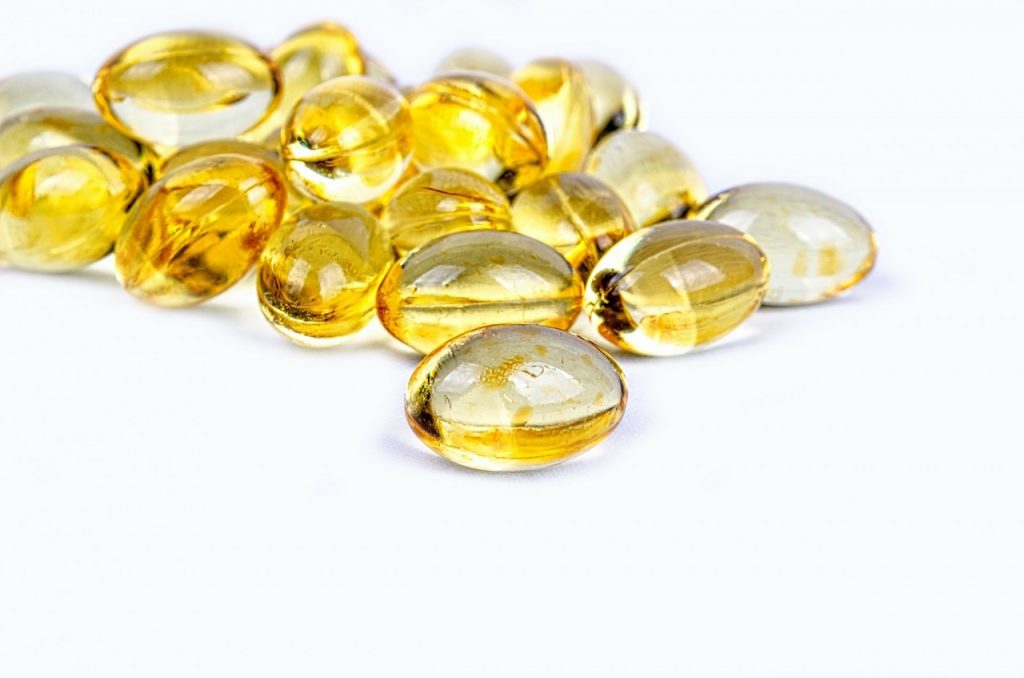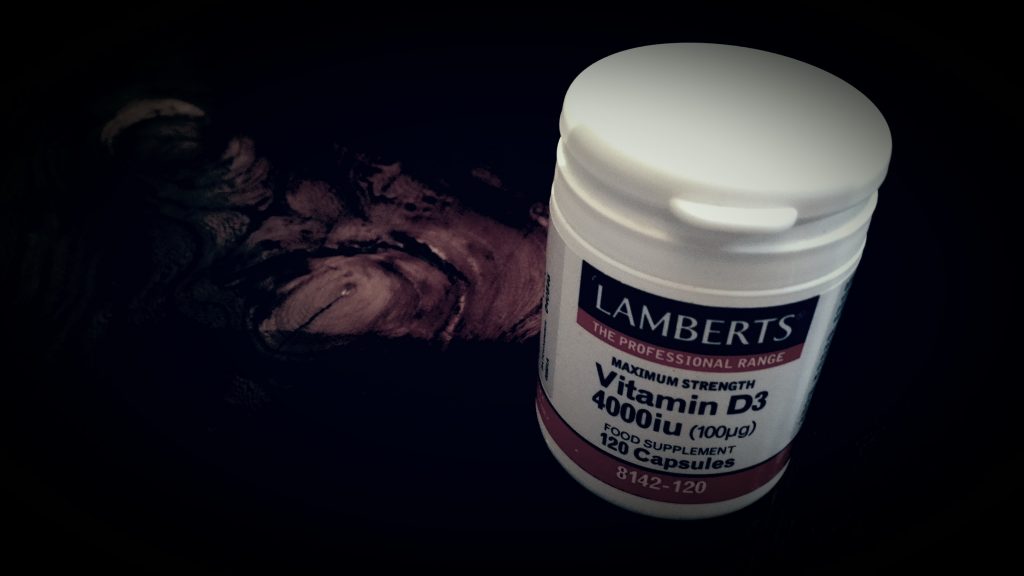 Vitamin D should really be considered a hormone rather than a vitamin as a dietary source is not required. Vitamin D can be produced in the skin by the action of ultraviolet light but diet can also contribute to total vitamin D blood levels. Toxicity of vitamin D is a possibility from excessive dietary intake, but is not possible from sunlight exposure. Many studies have shown the poor vitamin D status generally present in Western nations, with vitamin D status becoming more of an issue at higher latitudes where sunlight exposure is not consistent. As a result there is an increased interest in dietary supplements by these populations in order to improve their health. Taking supplements carries the risk of creating a vitamin D toxicity, although in reality the detrimental health effects of deficiency are more of a burden to health care resources than any risk of toxicity. Nonetheless, the risk of toxicity is a possibility, although the exact mechanism by which thus occurs is not clear, and the safe levels for vitamin D intake is still contentious.
Vitamin D should really be considered a hormone rather than a vitamin as a dietary source is not required. Vitamin D can be produced in the skin by the action of ultraviolet light but diet can also contribute to total vitamin D blood levels. Toxicity of vitamin D is a possibility from excessive dietary intake, but is not possible from sunlight exposure. Many studies have shown the poor vitamin D status generally present in Western nations, with vitamin D status becoming more of an issue at higher latitudes where sunlight exposure is not consistent. As a result there is an increased interest in dietary supplements by these populations in order to improve their health. Taking supplements carries the risk of creating a vitamin D toxicity, although in reality the detrimental health effects of deficiency are more of a burden to health care resources than any risk of toxicity. Nonetheless, the risk of toxicity is a possibility, although the exact mechanism by which thus occurs is not clear, and the safe levels for vitamin D intake is still contentious.

Vitamin D toxicity becomes apparent at levels of 25-hydroxyvitamin D above 250 nmol/L (100 ng/mL). Optimal concentrations for 25-hydroxyvitamin D levels should be around 100 nmol/L (40 ng/mL).
Dietary and sunlight synthesised vitamin D is hydroxylated in the liver producing 25-hydroxyvitamin D. Dietary sources can be from vitamin D 3 (cholecalciferol) or vitamin D2 (ergocalciferol). This is the current biomolecule that is measured to assess vitamin D status. The 25-hydroxyvitamin D is then further metabolised to 1,25-dihydroxyvitamin D in the kidney. The 1,25-dihydroxyvitamin D is the active metabolite of vitamin D that has physiological effects and should be considered a hormone. It passess into cells across the cell membrane where it binds to the vitamin D receptor in the nucleus of cells and thus causes cellular changes. Under normal physiological conditions, 1,25-dihydroxyvitamin D is likely the only metabolite of vitamin D that activates this receptor, but as concentrations climb due to excessive intake, other vitamin D metabolites may also cause cellular changes through activation of these vitamin D receptor or through inhibition of 1,25-dihydroxyvitamin D.
The toxicity of vitamin D may also relate to the fact that the vitamin is fat soluble. Vitamin D is taken up by the liver and is hydroxylated and this metabolite then passess into the blood as 25-hydroxyvitamin D. Vitamin D is sequentially hydroxylated and as hydroxylation proceeds the fat soluble characteristics of the compound decline. The metabolite 1,25-dihydroxyvitamin D is twice hydroxylated making it more water soluble than 25-dihydroxyvitamin D (once hydroxylated), which is in turn more water soluble than vitamin D itself (no hydroxylation). This is important because the degree of water solubility of the metabolites will affect how tightly they bind to the vitamin D binding protein, which transports the vitamin D in the blood. Entry to the cells is only accomplished by free unbound vitamin D metabolites in the blood and so displacing the 1,25-dihydroxyvitamin D from this protein may increase cellular uptake and cause some of the detrimental health effects seen with excessive intakes of vitamin D.

Vitamin supplements have become popular because of the research showing that the vitamin D levels for optimal health should be much higher than was previously considered. Current recommendations for adults are to consume somewhere around 2000 IU of vitamin D. The actual intake of vitamin D required to maintain health in the absence of vitamin D from sunlight may be even higher than this.
Blood levels of 25-hydroxyvitamin D should be above 100 nmol/L (40 ng/mL) in order to provide an optimal vitamin D status. However, as levels rise above 250 nmol/L (100 ng/mL) toxicity can occur. Calcaemia is the most well known toxic symptom for vitamin D and this is characterised by elevated blood levels of calcium. This results because one of the functions of 1,25-dihydroxyvitamin D is to cause an increase in the blood levels of calcium. It does thus by increasing absorption of calcium from the gastrointestinal tract, decreasing excretion in the urine, and also by increasing the calcium released from bone to the blood. As levels of 1,25-dihydroxyvitamin D rise, the calcium levels of the blood can also increase and this can lead to the deposition of calcium in tissues, such as blood vessels. However as mentioned previously, other metabolites of vitamin D may also contribute to the toxicity of vitamin D including 25-hydroxyvitamin D, and these may enter cells and have detrimental cellular effects.

Vitamin D is present in the diet as vitamin D3 (also called cholecalciferol) and vitamin D2 (also called ergocalciferol). Evidence suggests that vitamin D3 is more biologically active. However studies comparing the toxicity of the two forms are limited. The best way to obtain vitamin D is through exposure to sunlight.
A case study presented in the literature reported on the vitamin D and vitamin D metabolite levels of a family of individuals that had accidentally ingested too much vitamin D. The authors of the study measured the levels of vitamin D and its metabolites in the blood of the patients. What they found was that the amount of total 1,25 dihydroxyvitamin D in the blood was not elevated but fell within the normal range expected. However, the fraction of the 1,25-dihydroxyvitamin D that was not bound to the vitamin D transport protein was significantly elevated. The conclusion was that other vitamin D metabolites had knocked the 1,25-dihydroxyvitamin D off its transport protein and that this was affecting the cellular regulation by altering the amount of 1,25-dihydroxyvitamin D available to cells. Vitamin D toxicity may therefore be caused in part by an increase in 1,25-dihydroxyvitamin D in the presence of excessively high concentrations of other vitamin D metabolites in the blood.
Eat Well, Stay Healthy, Protect Yourself
RdB
